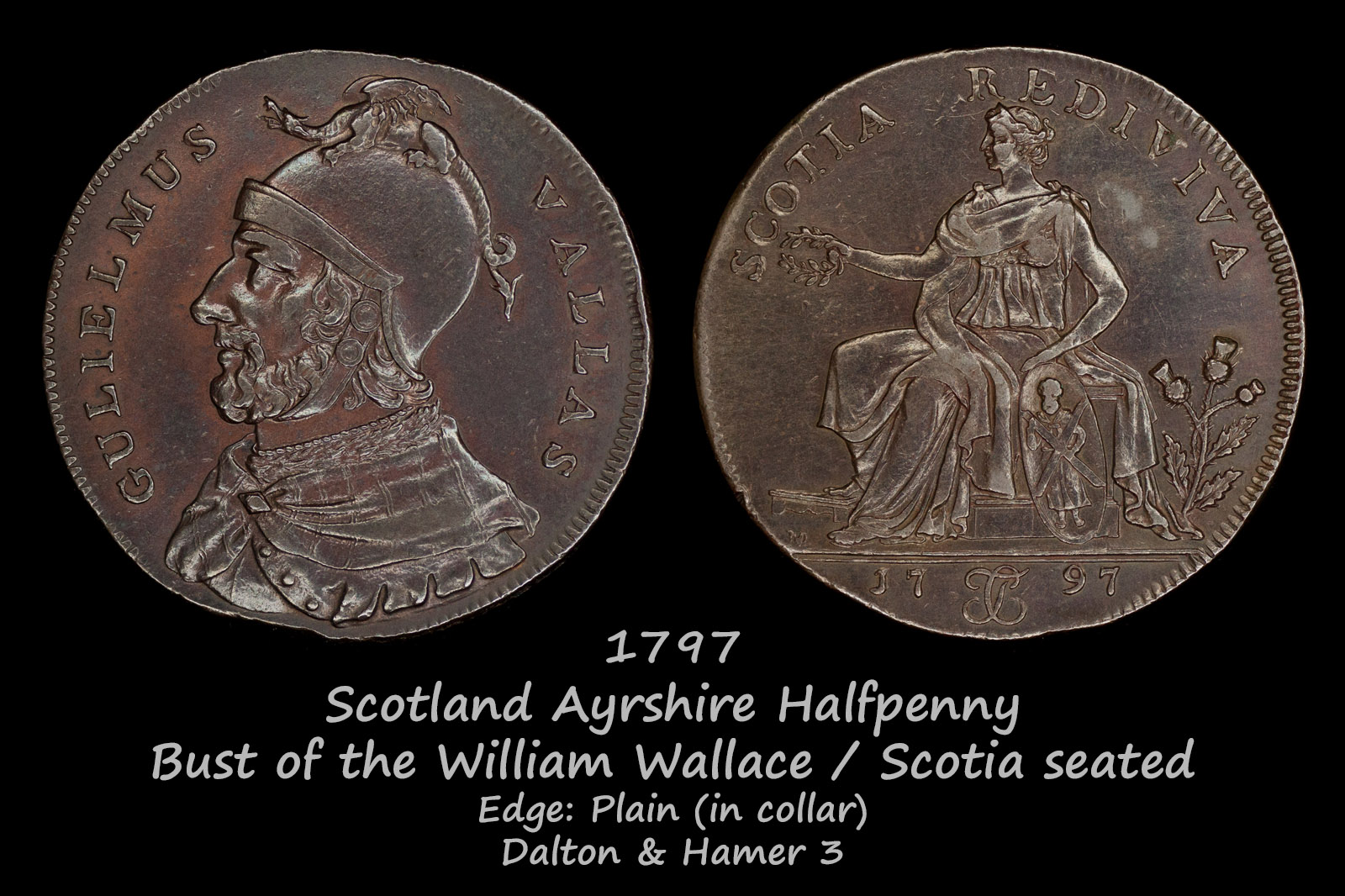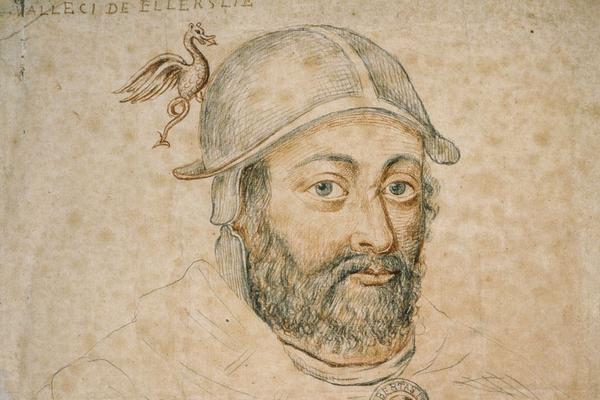
Online collections
monedastodas.com
All collections » Tokens » Ayrshire Halfpenny

The obverse features a bust of William
Wallace wearing a crested helmet with a dragon and wrapped in a plaid.
William Wallace (Sir William Wallace
c.1270-1305), who decided to rid his country of the English, was from Ayrshire. He
was the son of a small estate Scottish knight Sir Malcolm Wallace, who was a
vassal of Lord James Stewart from the line of future Scottish kings.

In May 1297, Wallace and a group of
associates killed the sheriff of Lanark, William Gezlrig. This
marked the beginning of the First War of Scottish Independence. Wallace
raised an army of numerous rebel bands, and by August 1297 the entire country
north of the River Forth was in the hands of the rebels. On
September 11, 1927, the troops of Wallace and Moray defeated the 10,000-strong
British army at the Battle of Stirling, after which Scotland gained independence
from the British for a while.
In 1298, the English King Edward I again
invaded Scotland, bringing a 12,000-strong army, including more than a thousand
heavy armed cavalry. On July 22, 1298, the Battle of Falkirk took
place. As a result of the betrayal of some Scottish lords,
Wallace's rebel army was defeated, and he himself was forced to flee to France,
where he tried to make an alliance with the French king Philip IV. William
waged a guerrilla war against the British for several years, but on August 5,
1305, he was betrayed and captured in the vicinity of Glasgow by English
soldiers, was taken to London, where King Edward I personally tried him for
treason. On August 23, he was executed by hanging, gutting and
quartering. His body was beheaded and cut into pieces, which were
exhibited in the largest cities of Scotland - Newcastle, Berwick, Stirling and
Perth,
The reverse shows Scotland seated with a laurel wreath in her right hand, while her left hand holds an oval shield depicting Saint Andrew and his cross. Behind her on the right is a growing thistle. The numerals of the date 1797 are separated by a monogram of the letters CT, which may mean Corona Triumphalis. In Roman times, the laurel wreath was one of the three types of triumphal crowns awarded to a victorious commander.
The customer for the manufacture of the token was William Fullarton (William Fullarton 1754-1808). He was born into the Fullarton family, descended from the same line in Angus, whose ancestors held the hereditary office of Royal Fowlers by appointment of King Robert I of Scotland (Robert the Bruce 1274-1329). The family was granted royal lands on the condition that when the king stayed at Forfar Castle, he should be provided with a bird. Colonel Fullarton held various public offices and was twice elected Member of Parliament for Ayrshire. Having no military training, he was appointed colonel of the 98th Infantry Regiment and successfully served in India. At the start of the war with France in 1793 he led a regiment known as Fullarton's Light Horse or 23rd Regiment, and then the 101st Regiment of Foot in 1800. In 1801, William Fullarton was appointed governor of Trinidad. He died in London in 1808 and his estate was purchased by the Duke of Portland. Colonel Fullarton was the author of several works on India and also on agriculture.
Engraver and manufacturer Milton.